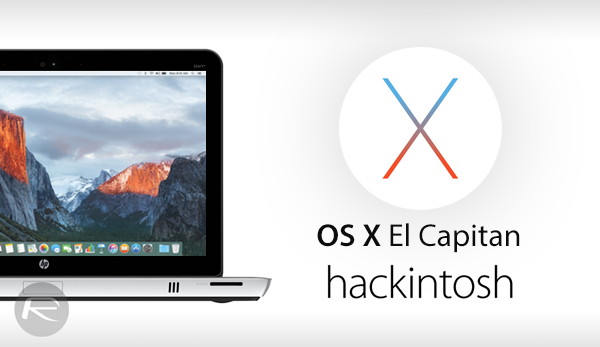To get the latest features and maintain the security, stability, compatibility and performance of your Mac, it's important to keep your software up to date. Apple recommends that you always use the latest macOS that is compatible with your Mac.
Find out how to upgrade to macOS Big Sur, the latest version of macOS.
Check compatibility

Download the El Capitan installer from the Apple website. It is no longer available in the App Store. Once the download is complete, the installer starts automatically. When it does, quit the installer. DVD DL, Mac OS X 10.11 El Capitan Full OS Install Reinstall Recovery Upgrade These DVDs are NOT original. Installing or upgrading your software from a DVD is NOT a quick process and can take 45-60 minutes to complete.
The version of macOS that came with your Mac is the earliest version it can use. For example, if your Mac came with macOS Big Sur, it will not accept installation of macOS Catalina or earlier.
If a macOS can't be used on your Mac, the App Store or installer will let you know. For example, it may say that it's not compatible with this device or it's too old to be opened on this version of macOS. To confirm compatibility before downloading, check the minimum hardware requirements:
- macOS Catalina 10.15 hardware requirements
- macOS Mojave 10.14 hardware requirements
- macOS High Sierra 10.13 hardware requirements
- macOS Sierra 10.12 hardware requirements
- OS X El Capitan 10.11 hardware requirements
- OS X Yosemite 10.10 hardware requirements

Download macOS using Safari on your Mac

Safari uses these links to find the old installers in the App Store. After being downloaded from the App Store, the installer will open automatically.
- macOS Catalina 10.15 can upgrade Mojave, High Sierra, Sierra, El Capitan, Yosemite or Mavericks
- macOS Mojave 10.14 can upgrade High Sierra, Sierra, El Capitan, Yosemite, Mavericks or Mountain Lion
- macOS High Sierra 10.13 can upgrade Sierra, El Capitan, Yosemite, Mavericks or Mountain Lion
Safari will download the following older installers as a disk image named InstallOS.dmg or InstallMacOSX.dmg. Open the disk image, then open the .pkg installer inside the disk image. It will install an app named Install [Version Name]. Open that app from your Applications folder to start installing the operating system.
- macOS Sierra 10.12 can upgrade El Capitan, Yosemite, Mavericks, Mountain Lion or Lion
- OS X El Capitan 10.11 can upgrade Yosemite, Mavericks, Mountain Lion, Lion or Snow Leopard
- OS X Yosemite 10.10can upgrade Mavericks, Mountain Lion, Lion or Snow Leopard
How to Install Mac OS X El Capitan on Virtualbox on Windows With quite 89 million users—consumers, scientists, animators, developers, and system administrators—OS X is the most How to Delete/Uninstall Applications in MacOS Catalina 10.15.
Luminance HDR 2.6.0 is out!
After almost two years of development Luminance HDR 2.6.0 is finally out.
- For Mac OS X/macOS users, Luminance HDR is compatible with Mac OS X 10.9 (El Capitan) or later versions.A new build that fixes an issue with alignimagestack on macOS has been uploaded. Mac users will get the updated image from the link below as usual.
- Better support under Linux through PlayOnLinux software allowing easy install/uninstall. Improved OS X User Interface and compatibiltiy with OS X 10.11 El Capitan. Updated license usage. BugFix: - Improved Memory usage and minor optimization and improvements. Fixed various minor bugs - Fixed minor bug when saving compressed TIFF files.
- Very late answer: my 10 year old iMac runs smoothly for light tasks with El Capitan 10.11.6 with 6Gb RAM. Don't expect much raw power! Perfect for office work, light video editing and movies. Excellent after 10 years.
This new release introduces new features:
- Four brand new tone-mapping operators: ferwerda, kimkautz, lischinski and vanhateren.
- All tone-mapping operators have been optimized for speed and lower memory consumption (Thanks to Ingo Weyrich).
- Speed up for hdr creation (Also thanks to Ingo Weyrich).
- Added post processing gamma and saturation.
- In HDR Wizard it is now possible to preview the final HDR after applying different fusion settings and before accepting it.
- Other small improvements and bug-fixing as usual.
Minimum requirement for Luminance HDR is a CPU that supports SSE2.
You can download Luminance HDR 2.6.0 using one of these links:
[ Windows 64 bits ]
[ macOS 10.12+ (64-bit, Intel) ]
[ macOS 10.10/11 (64-bit, Intel) ]
[ Source Code ]
If you appreciate Luminance HDR, please consider a donation (there is no minimum amount!):
Netflix free download mac. If you want to share with other users your results, you can use our Flickr group and Facebook group
These advanced steps are primarily for system administrators and others who are familiar with the command line. You don't need a bootable installer to upgrade macOS or reinstall macOS, but it can be useful when you want to install on multiple computers without downloading the installer each time.
What you need to create a bootable installer
- A USB flash drive or other secondary volume formatted as Mac OS Extended, with at least 14GB of available storage
- A downloaded installer for macOS Big Sur, Catalina, Mojave, High Sierra, or El Capitan
Download macOS
- Download: macOS Big Sur, macOS Catalina, macOS Mojave, or macOS High Sierra
These download to your Applications folder as an app named Install macOS [version name]. If the installer opens after downloading, quit it without continuing installation. To get the correct installer, download from a Mac that is using macOS Sierra 10.12.5 or later, or El Capitan 10.11.6. Enterprise administrators, please download from Apple, not a locally hosted software-update server. - Download: OS X El Capitan
This downloads as a disk image named InstallMacOSX.dmg. On a Mac that is compatible with El Capitan, open the disk image and run the installer within, named InstallMacOSX.pkg. It installs an app named Install OS X El Capitan into your Applications folder. You will create the bootable installer from this app, not from the disk image or .pkg installer.
Use the 'createinstallmedia' command in Terminal
- Connect the USB flash drive or other volume that you're using for the bootable installer.
- Open Terminal, which is in the Utilities folder of your Applications folder.
- Type or paste one of the following commands in Terminal. These assume that the installer is in your Applications folder, and MyVolume is the name of the USB flash drive or other volume you're using. If it has a different name, replace
MyVolumein these commands with the name of your volume.
Big Sur:*
Catalina:*
Mojave:*
High Sierra:*
El Capitan:
* If your Mac is using macOS Sierra or earlier, include the --applicationpath argument and installer path, similar to the way this is done in the command for El Capitan.
After typing the command:
- Press Return to enter the command.
- When prompted, type your administrator password and press Return again. Terminal doesn't show any characters as you type your password.
- When prompted, type
Yto confirm that you want to erase the volume, then press Return. Terminal shows the progress as the volume is erased. - After the volume is erased, you may see an alert that Terminal would like to access files on a removable volume. Click OK to allow the copy to proceed.
- When Terminal says that it's done, the volume will have the same name as the installer you downloaded, such as Install macOS Big Sur. You can now quit Terminal and eject the volume.
Use the bootable installer
Determine whether you're using a Mac with Apple silicon, then follow the appropriate steps:
Apple silicon
- Plug the bootable installer into a Mac that is connected to the internet and compatible with the version of macOS you're installing.
- Turn on your Mac and continue to hold the power button until you see the startup options window, which shows your bootable volumes and a gear icon labled Options.
- Select the volume containing the bootable installer, then click Continue.
- When the macOS installer opens, follow the onscreen instructions.
Intel processor
El Capitan Download Installer
- Plug the bootable installer into a Mac that is connected to the internet and compatible with the version of macOS you're installing.
- Press and hold the Option (Alt) ⌥ key immediately after turning on or restarting your Mac.
- Release the Option key when you see a dark screen showing your bootable volumes.
- Select the volume containing the bootable installer. Then click the up arrow or press Return.
If you can't start up from the bootable installer, make sure that the External Boot setting in Startup Security Utility is set to allow booting from external media. - Choose your language, if prompted.
- Select Install macOS (or Install OS X) from the Utilities window, then click Continue and follow the onscreen instructions.
El Capitan Usb Installer Windows
Learn more
For more information about the createinstallmedia command and the arguments that you can use with it, make sure that the macOS installer is in your Applications folder, then enter the appropriate path in Terminal:
Os X El Capitan Usb Installer
- Big Sur: /Applications/Install macOS Big Sur.app/Contents/Resources/createinstallmedia
- Catalina: /Applications/Install macOS Catalina.app/Contents/Resources/createinstallmedia
- Mojave: /Applications/Install macOS Mojave.app/Contents/Resources/createinstallmedia
- High Sierra: /Applications/Install macOS High Sierra.app/Contents/Resources/createinstallmedia
- El Capitan: /Applications/Install OS X El Capitan.app/Contents/Resources/createinstallmedia
El Capitan Installer Download Link
El Capitan Usb Installer Download
A bootable installer doesn't download macOS from the internet, but it does require an internet connection to get firmware and other information specific to the Mac model.